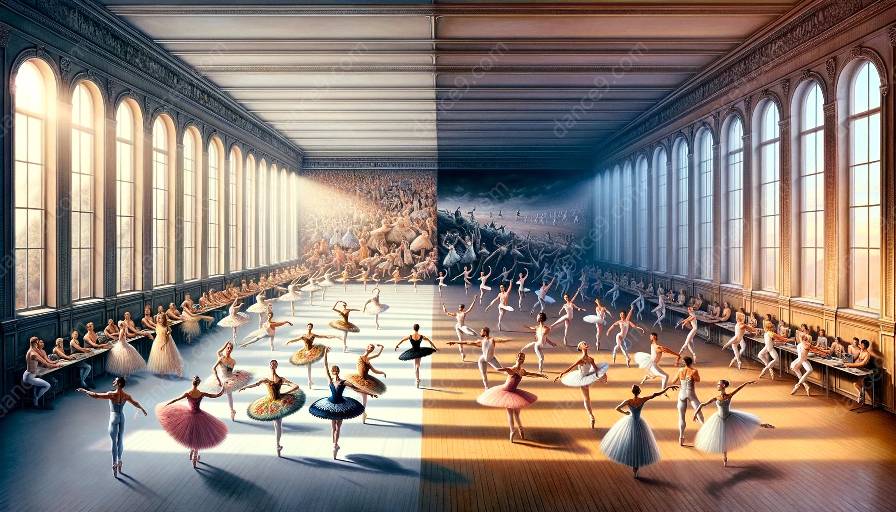Ballet is a form of classical dance that has evolved distinct styles in various countries, with Russian and French ballet being two prominent examples. Understanding the similarities and differences between these ballet styles offers insights into the comparative study of different ballet traditions and the historical and theoretical aspects of ballet.
Overview of Russian Ballet Style
Russian ballet is known for its technical precision, expressive performances, and strong emphasis on classical training. One of the defining features of Russian ballet is the Vaganova method, developed by Agrippina Vaganova, which emphasizes proper body alignment, strength, and fluidity of movement. Russian ballet also showcases an intricate and elegant use of arms, often referred to as porte de bras, and a focus on dramatic storytelling.
Overview of French Ballet Style
French ballet, on the other hand, is characterized by its stylistic refinement, lightness, and emphasis on artistry. The French ballet technique places importance on precise footwork, graceful movements, and a sense of buoyancy. In contrast to the Russian style, French ballet often prioritizes speed, agility, and a fluidity that exudes an air of effortlessness.
Similarities and Differences
While both Russian and French ballet styles share a commitment to technical excellence and a rich tradition of storytelling through dance, they differ in their approach to execution and artistic expression. Russian ballet tends to emphasize strength, formalism, and intricate choreography, while French ballet highlights lightness, subtlety, and artistic freedom within the movements. Additionally, both styles have contributed significantly to the development of ballet as a performing art, influencing choreographic innovations and training methodologies worldwide.
Comparative Study of Different Ballet Styles
Studying the differences between Russian and French ballet styles provides a fascinating case study in the comparative analysis of diverse ballet traditions. Scholars and ballet enthusiasts can explore how cultural, historical, and educational factors have shaped the distinct characteristics of these styles, leading to variations in technique, performance aesthetics, and choreographic norms. This comparative approach also facilitates a deeper understanding of the global evolution of ballet as an art form, as it reveals the interconnectedness of different ballet styles and the mutual influences they have had on each other.
Ballet History and Theory
The exploration of Russian and French ballet styles contributes to the broader understanding of ballet history and theory. By examining the evolution of these styles within their respective cultural contexts, scholars can trace the impact of historical events, artistic movements, and pedagogical developments on the shaping of ballet traditions. Furthermore, the comparison of Russian and French ballet styles aligns with the theoretical exploration of dance aesthetics, performance analysis, and the socio-cultural dynamics that have influenced the artistic direction of ballet over time.
In Conclusion
In conclusion, the comparison of Russian and French ballet styles unveils a rich tapestry of artistic expression, technical expertise, and cultural significance. This exploration aligns with the comparative study of different ballet styles and offers valuable insights for delving into ballet history and theory, shedding light on the diverse influences and distinctive characteristics that have shaped the global landscape of ballet as a celebrated art form.





























